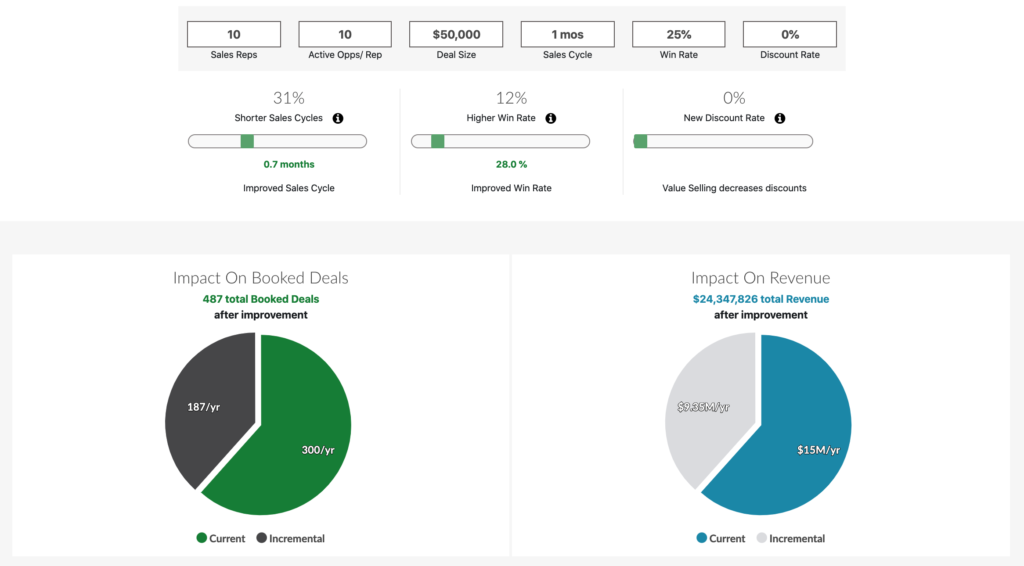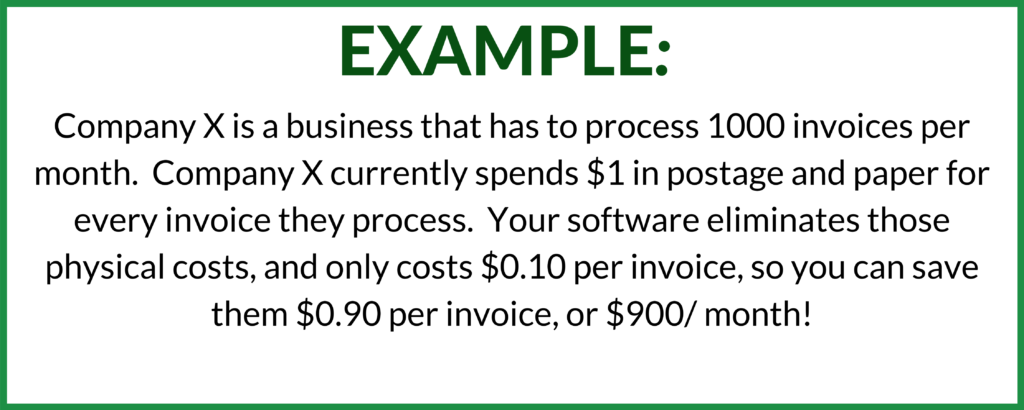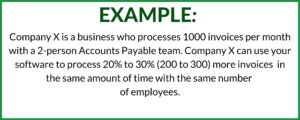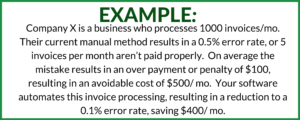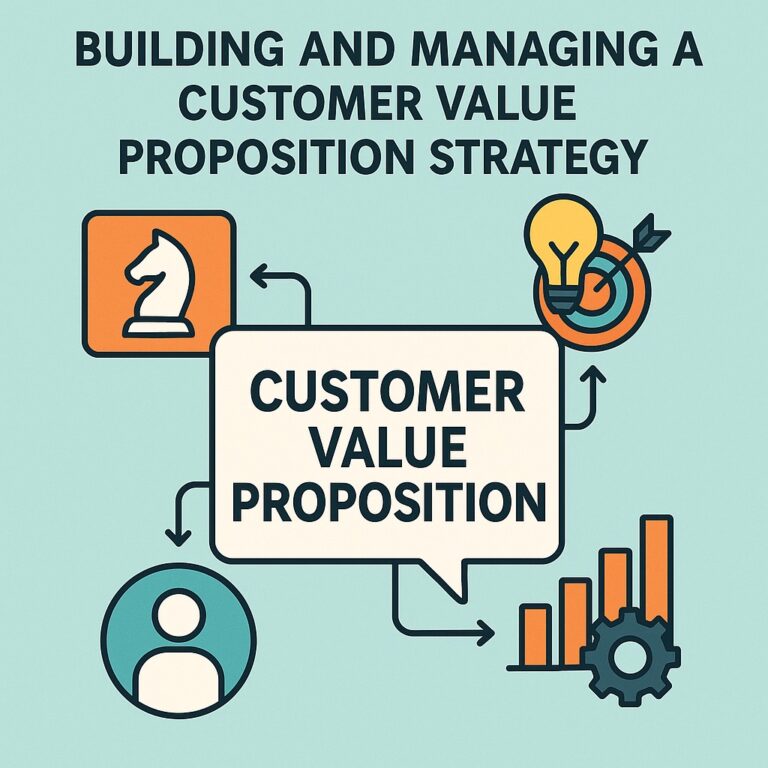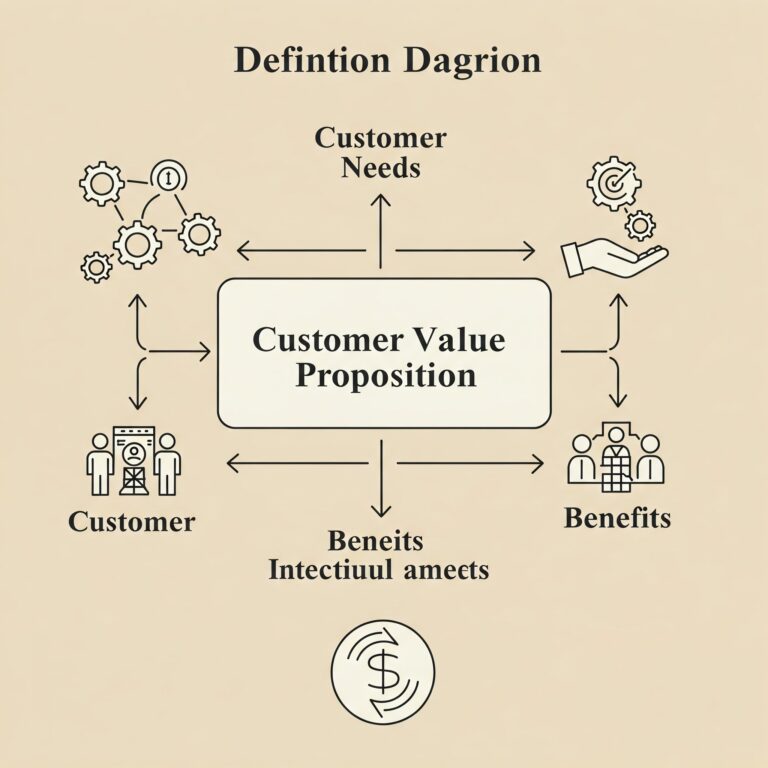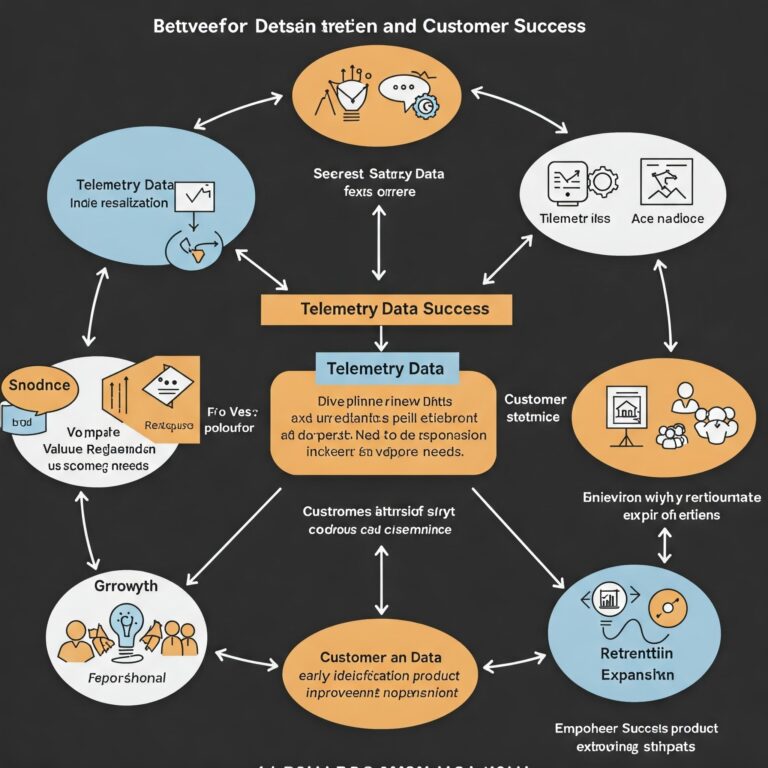Is ROI A Pain Killer, Or Vitamin? 4 Options For ROI Quantification To Increase Your Sales
One of the most impactful things you can do during the sales process is quantify your product’s value, or ROI (“Return on Investment”), to your customers. But, as always, there’s more than one way to make this happen. Are you using ROI as a pain killer or a vitamin in your sales process? Communicating your product’s ROI is an effective sales tool in any economic climate. During a boom phase, it might be more of a vitamin; you can leverage it to strengthen and build your case for implementing your product or service.
In a recession, it’s a pain killer; communicating ROI allows you to avoid the pain of lost sales to buyers with frozen budgets. It’s essential to allow you to advance a sales cycle, as you demonstrate to your customer how you reduce or eliminate real costs.
What might it be worth to your sales organization to quantify value consistently? Let’s see:
For example, a company with:
| 10 | 10 | $50K | 6 mos | 25% | 20% |
| Sales Reps | Active Opps Each | Average Deal | Sales Cycle | Win Rate | Discount Rate |
could improve their total booked deals by 20% (from 50 to 60) and increase total revenue by $390,000 per year due to shorter sales cycles, increased win rates and decreased discounts.
Want to see what your numbers would look like? Click here!
Measurable ROI calculations are one of the most powerful weapons a sales professional can use to close sales. In fact, Gartner validated this in their March 2020 report, in which 42% of respondents stated that value assessment tools are the preferred type of content vendors should share with their prospects. How do you do this? ROI often tossed in at the end of a conversation or buried in a proposal? That’s bad. You should be leading with the ROI.
Here’s the good news: It doesn’t have to be hard.
There are four primary lenses through which you can communicate your ROI to your customers. The type of lens you use depends on the circumstances; effectively demonstrating the full benefit of your solution starts with a clear understanding of each of these lenses and how to select the right one for the current economic climate, your prospect’s biggest concerns, and the true measure of impact your product or service has for your clients.
Suggested read: Ultimate guide to customer value management
Understanding the 4 Key Areas of ROI for Every Sales Scenario
Let’s consider a hypothetical scenario where a company is facing challenges in managing its customer relationships and sales pipeline effectively. They are using outdated methods like spreadsheets and manual data entry, leading to inefficiencies, missed opportunities, and errors. Here’s how each of the four key areas of ROI can be applied in this sales scenario:
1. Hard Cost Savings
Reducing hard costs – or expenses on external or third-party products or services – is perhaps the most effective way of quantifying cost savings to your prospective clients. It’s one of the most powerful approaches in an economic downturn, when departments are being asked to reduce costs while minimizing layoffs. Leveraging the power of a visually engaging ROI calculator enables you to provide concrete examples of potential for savings during the sales process…
In a prior post, we demonstrated four main ways to calculate hard cost savings. Those ways are:
a) Consolidate spend across vendors
b) Consume less
c) Realize better prices from vendors
d) Minimize reliance on expensive consultants or third-party resources
How To Use This ROI Calculation
To use this approach, develop a list of alternative or substitute solutions your customers could be using currently to address the problems you are trying to solve for them. You can get this list from your marketing or competitive intelligence team, and you can also simply ask your prospects, “How are you addressing this issue today? If you are paying for another solution or service, whom are you paying, and how much does it cost?”
2. Productivity Gains
Productivity gains is the most common ROI proof point that marketing and sales professionals utilize. While important, it’s not necessarily the most powerful measurement of ROI, as it basically means that you are giving full-time employees time back in their day. Financially conservative buyers often don’t give you much credit for that. If you can show that these employees have a high likelihood of using that time in a highly value-added way, then this can be a useful metric.
How To Use This ROI Calculation
You have to know the personas and roles of the people who will be using your solution. Please ask your customer what these employees would do if they had 10% of their time freed up, or an extra 20 hours per month? If you are freeing up an extra 20 hours for a salesperson, for example, from doing repetitive follow-up and documentation work, then you might reasonably expect that salesperson’s quota attainment to grow – and this is real value!
Ready to unlock your sales potential? Discover how ValueCore’s ROI-driven solutions can supercharge your business growth.
3. Revenue Growth
This is exactly the kind of ROI that makes your products and services invaluable to companies; there’s not a business that doesn’t want to increase revenue or reduce churn. Many companies will say they can increase revenue, increase sales, increase profit. The challenge is proving that you can get the desired results by leveraging realistic and accurate data and understanding the true measure of your company’s value to your customers. Be sure to survey your existing customers to verify how you are generating value, particularly for these types of claims!
How To Use This ROI Calculation
There is a science and an art to quantifying and communicating value. You should be an expert on the ways that your solution generates value – including incremental revenue and reduced churn – for your customers. Have a short list prepared of these different opportunities, and see if any of them resonates with a given prospect. You can also give your customer the chance to give you an idea that you didn’t have…by saying, “If our solution addressed this problem for you, how could this impact your top-line revenue?” You’ll be surprised – 1 out of every 3 to 5 customers may give you an answer you didn’t expect!
4. Risk Mitigation
Company X is a business who processes 1000 invoices per month. Their current manual method results in a 0.5% error rate, or 5 invoices per month aren’t paid properly. On average the mistake results in an overpayment, or penalty, of $100, resulting in an avoidable cost of $500/ mo. Your software automates this invoice processing, resulting in a reduction to a 0.1% error rate, saving $400/ mo.
Risk mitigation is one of the most overlooked opportunities for ROI calculation. According to Deloitte, organizations that embrace proactive risk management strategies “typically exceed profitability targets and achieve higher growth.” The ability to develop accurate estimates of risk mitigation can be a very powerful tool for the enterprising sales team. Additionally, most sales teams don’t use these as differentiators, meaning you have one more tool in your arsenal to stand out in your executive summary with hard data to back you up.
How To Use This ROI Calculation
Review with your customer for a short list of “bad things that can periodically happen” using their current suboptimal approach. Then try to quantify the average and worst case costs of these bad things – starting with what is easiest to measure on a quarterly or annual basis. This can then allow you to calculate your customer’s current “risk exposure cost.”
Tying It All Together
One of the most common mistakes that sales professionals make in relation to calculating ROI during the sales process is underestimating the value of their product by using only one or two of the methods of ROI calculations we’ve discussed in this article. While the calculations are very powerful individually, using the calculations in combination can be accretive to your sales success. The key is to look for opportunities to combine these and show a bigger, more comprehensive picture of ROI. The right calculation tool can help you “un-stick” stuck opportunities and ensure you’re getting the right information to present your solution in a way that truly matters to the key individuals at your customer’s organization.
Don’t just take our word for it. See exactly how your numbers could change if you had the right way to help your customers.
Further reading
If you found this article helpful, you might want to check out these related resources,

